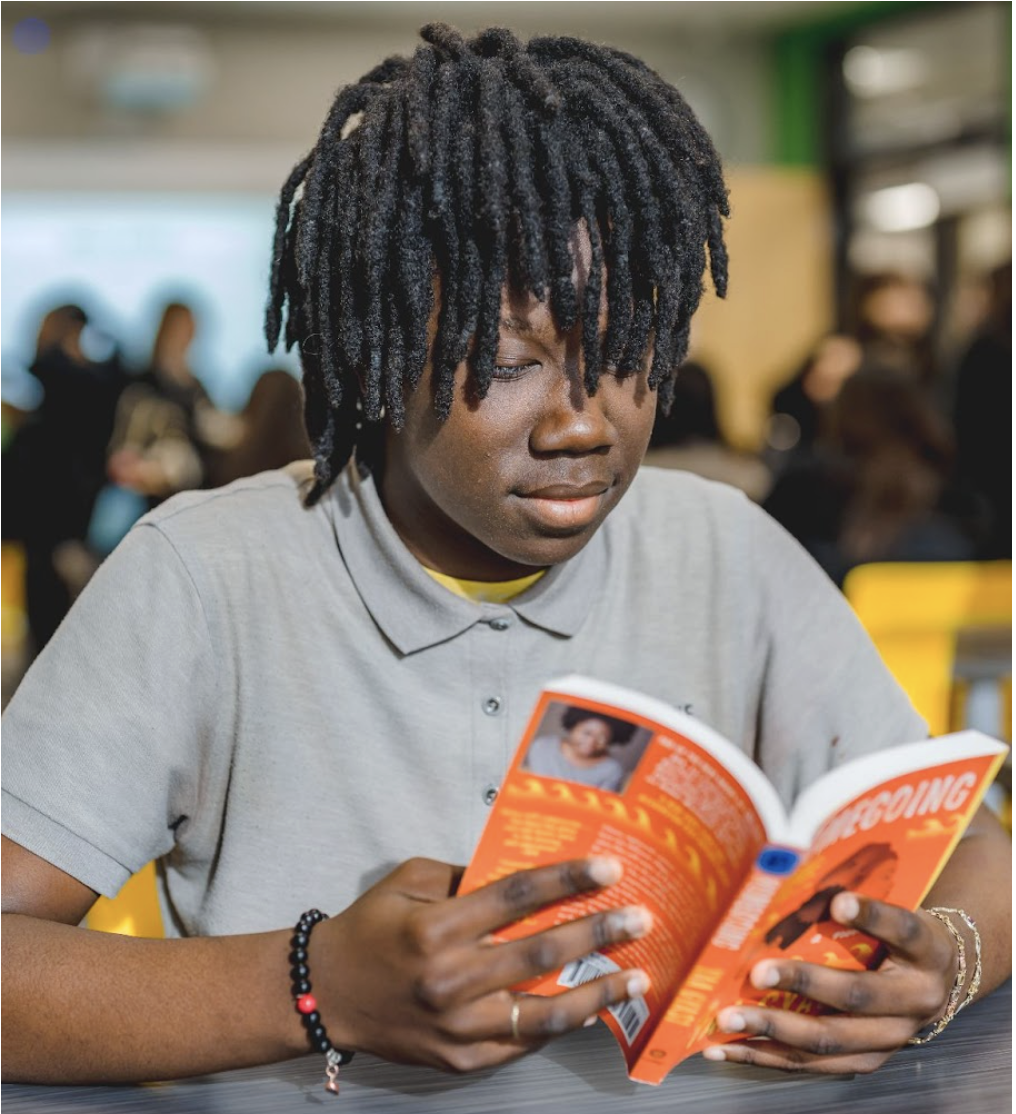Get Students to Show their Work

Formative assessments are supposed to give a teacher information quickly about students’ skillfulness so that the teacher can respond with just the right instructional approach to move the students forward.
When math teachers assign a problem, and they ask their students to show their work, they can pinpoint the part of the problem that confused them. They can then re-teach the discrete skill that requires remediation.
For English teachers, results from a typical formative assessment often paint a far more opaque picture. When students get a multiple choice question incorrect, the teacher can't tell whether the student misread the text or misread the question or both. Can they not figure out the meaning of the text, or do they not know the literary term included in the question? Or, were they confused by the wording of the question?
Riveting Results’ formative assessments ensure that students show their work. As students read each section of a book, they perform a set of tasks–Vocabulary, Fluency, Rereading, Paraphrase, and Analysis–that enable them to pull more and more insight from a text. Each task requires a unique set of skills, and when a student falls short, the teacher can easily spot the gap and assign the necessary practice the student needs in order to perform better.
A Case Study: Showing Student Work on a Multiple Choice Comprehension Quiz
December, 2023: Ms. Fisk’s 10th grade English class read chapter 6 of Frederick Douglass’ 1845 autobiography. Let’s follow how she tracked and supported her student, Yasmin, during the Rereading activity.
Assessment 1: Yasmin takes a five-question multiple choice comprehension quiz.
PROCESS
The questions and possible answers do not include literary terms and so are a true measure of comprehension of the text itself.
The teacher follows the same routine for every quiz:
- She has not done anything to help the students understand the text before the quiz so that it is an accurate measure of independent comprehension.
- She reminds students to use their books to find the answers to the text-dependent questions.
RESULT
Yasmin scores a zero out of five on the quiz.
Ms. Fisk concludes that Yasmin is not able to understand this section of text independently.
Assessment 2: Yasmin rereads the section with a partner.
PROCESS
Ms. Fisk chooses for the class to “review” Question 1, noting widespread student disagreement about the correct answer.
Question 1
When Douglass refers to the “blighting and dehumanizing effects of slavery” in the first paragraph, he is referring to the impact of slavery on …
a) Douglass
b) whites in general
c) slaves who had to work for cruel white masters
d) All of the above.
For the review, Yasmin, who initially chose “c,” is paired with Juan, who initially chose "d.” They debate who is correct, each writing down evidence from the text that supports their particular choice—and their partner’s choice. The activity requires them to come to a consensus, so they continue to discuss until they decide to choose “b”. They also have to explain in writing what convinced them that both their initial answers had been incorrect.
RESULT
The choice of “b” is, in fact, correct.
Ms. Fisk concludes that when she works with a partner, Yasmin can go back, reread carefully, and correct a comprehension error.
Assessment 3: Yasmin and her class discuss what caused the confusion with question 1.
PROCESS
Ms. Fisk leads a class discussion in which she asks Yasmin to explain why she switched her answer from “c” to “b.” Yasmin, with the help of her notes, says: “I chose b because Douglass talked about how Mrs. Auld ‘had a good degree that preserved on whites.’” Ms. Fisk’s follow-up questions enable Yasmin to clarify what she meant by ”had a good degree that preserved on.”
RESULT
Yasmin explains that Douglass believed that Ms. Auld had been a good person when he first met her and that in this part of the book Douglass is talking only about the damage that slavery did to white people like Mrs. Auld.
Ms. Fisk concludes that Yasmin can surface the source of a misconception when she discusses the text and rereads.
Next Instructional Steps: Assign just the right activities.
Ms. Fisk continues to assign Yasmin to complete a quiz for each section of text, reminding Yasmin to reread during the quiz to see if she can comprehend this complex independently.
If Ms. Fisk sees that Yasmin continues to struggle to comprehend independently, she assigns her more fluency activities (practicing reading aloud).
We want to know what you think.
We recommend you read these next
Meet The Team
The Riveting Results program works because it incorporates feedback from dozens of educators experienced in the classroom and in running schools. Unlike other programs that primarily use academic experts to review materials, Riveting Results gets feedback from educators who have actually used Riveting Results in the classroom to develop students reading and writing performance.
contact us



































